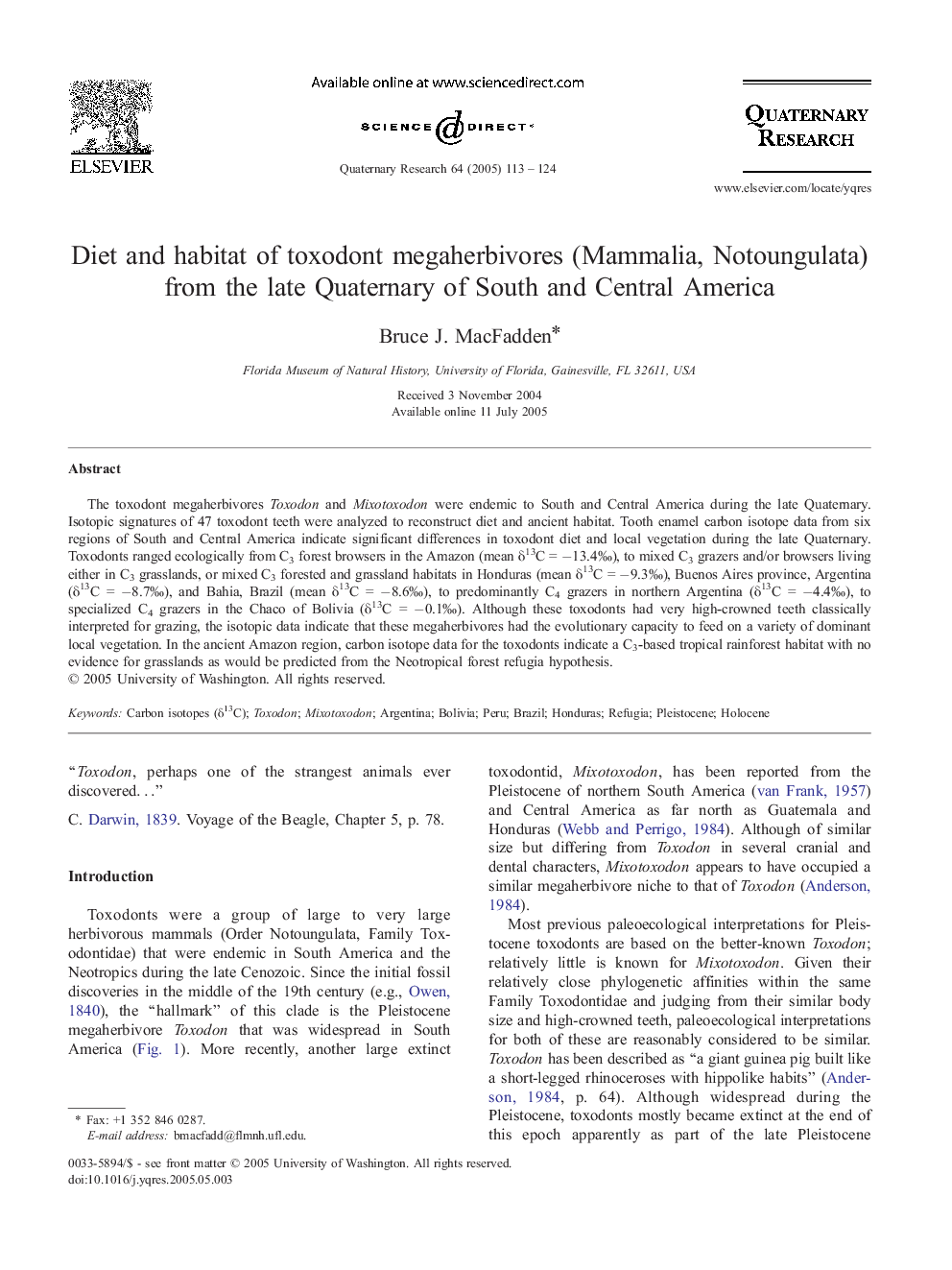| کد مقاله | کد نشریه | سال انتشار | مقاله انگلیسی | نسخه تمام متن |
|---|---|---|---|---|
| 10501321 | 944845 | 2005 | 12 صفحه PDF | دانلود رایگان |
عنوان انگلیسی مقاله ISI
Diet and habitat of toxodont megaherbivores (Mammalia, Notoungulata) from the late Quaternary of South and Central America
دانلود مقاله + سفارش ترجمه
دانلود مقاله ISI انگلیسی
رایگان برای ایرانیان
کلمات کلیدی
موضوعات مرتبط
مهندسی و علوم پایه
علوم زمین و سیارات
زمین شناسی
پیش نمایش صفحه اول مقاله

چکیده انگلیسی
The toxodont megaherbivores Toxodon and Mixotoxodon were endemic to South and Central America during the late Quaternary. Isotopic signatures of 47 toxodont teeth were analyzed to reconstruct diet and ancient habitat. Tooth enamel carbon isotope data from six regions of South and Central America indicate significant differences in toxodont diet and local vegetation during the late Quaternary. Toxodonts ranged ecologically from C3 forest browsers in the Amazon (mean δ13C = â13.4â°), to mixed C3 grazers and/or browsers living either in C3 grasslands, or mixed C3 forested and grassland habitats in Honduras (mean δ13C = â9.3â°), Buenos Aires province, Argentina (δ13C = â8.7â°), and Bahia, Brazil (mean δ13C = â8.6â°), to predominantly C4 grazers in northern Argentina (δ13C = â4.4â°), to specialized C4 grazers in the Chaco of Bolivia (δ13C = â0.1â°). Although these toxodonts had very high-crowned teeth classically interpreted for grazing, the isotopic data indicate that these megaherbivores had the evolutionary capacity to feed on a variety of dominant local vegetation. In the ancient Amazon region, carbon isotope data for the toxodonts indicate a C3-based tropical rainforest habitat with no evidence for grasslands as would be predicted from the Neotropical forest refugia hypothesis.
ناشر
Database: Elsevier - ScienceDirect (ساینس دایرکت)
Journal: Quaternary Research - Volume 64, Issue 2, September 2005, Pages 113-124
Journal: Quaternary Research - Volume 64, Issue 2, September 2005, Pages 113-124
نویسندگان
Bruce J. MacFadden,